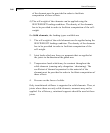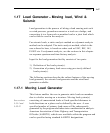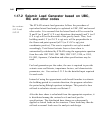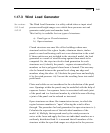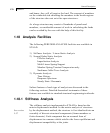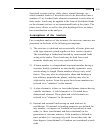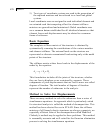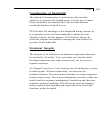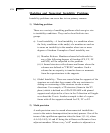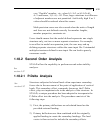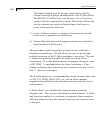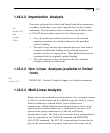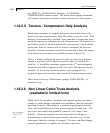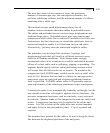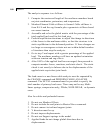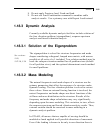
General Description
Section 1
1-74
Modeling and Numerical Instability Problems
Instability problems can occur due to two primary reasons.
1) Modeling problem
There are a variety of modeling problems which can give rise
to instability conditions. They can be classified into two
groups.
a) Local instability - A local instability is a condition where
the fixity conditions at the end(s) of a member are such as
to cause an instability in the member about one or more
degrees of freedom. Examples of local instability are:
(i) Member Release: Members released at both ends for
any of the following degrees of freedom (FX, FY, FZ
and MX) will be subjected to this problem.
(ii) A framed structure with columns and beams where the
columns are defined as "TRUSS" members. Such a
column has no capacity to transfer shears or moments
from the superstructure to the supports.
b)
Global Instability - These are caused when the supports of the
structure are such that they cannot offer any resistance to
sliding or overturning of the structure in one or more
directions. For example, a 2D structure (frame in the XY
plane) which is defined as a SPACE FRAME with pinned
supports and subjected to a force in the Z direction will topple
over about the X-axis. Another example is that of a space
frame with all the supports released for FX, FY or FZ.
2) Math precision
A math precision error is caused when numerical instabilities
occur in the matrix decomposition (inversion) process. One of the
terms of the equilibrium equation takes the form 1/(1-A), where
A=k1/(k1+k2); k1 and k2 being the stiffness coefficients of two
adjacent members. When a very "stiff" member is adjacent to a



